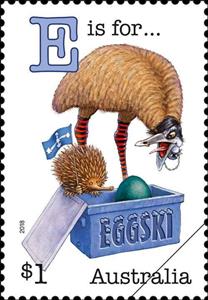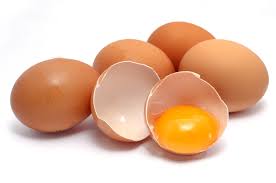Stamp: E is for... (Australia 2018)
E is for... (Australia 2018)
18 September (Australia ) within release Fair Dinkum Aussie Alphabet Part 4 goes into circulation Stamp E is for... face value 1 Australian dollar
| Stamp E is for... in catalogues | |
|---|---|
| Colnect codes: | Col: AU 2018-24A |
Stamp is square format.
Also in the issue Fair Dinkum Aussie Alphabet Part 4:
- Stamp - O is for... face value 1;
- Stamp - Y is for... face value 1;
- Stamp - Z is For... face value 1;
- Stamp - Y is For... face value 1;
- Stamp - X is For... face value 1;
- Stamp - E is For... face value 1;
- Stamp - E is for... face value 1;
- Stamp - O is For... face value 1;
- Stamp - Z is for... face value 1;
- Stamp - X is for... face value 1;
- Booklet - E is For... face value 10*1;
- Booklet - O is For... face value 10*1;
- Booklet - X is For... face value 10*1;
- Booklet - Y is For... face value 10*1;
- Booklet - Z is For... face value 10*1;
|
Data entry completed
46%
|
|
|---|---|
| Stamp E is for... in digits | |
| Country: | Australia |
| Date: | 2018-09-18 |
| Emission: | Commemorative |
| Format: | Stamp |
| Face Value: | 1 Australian dollar |
Stamp E is for... it reflects the thematic directions:
Animals are multicellular, eukaryotic organisms of the kingdom Animalia (also called Metazoa). All animals are motile, meaning they can move spontaneously and independently, at some point in their lives. Their body plan eventually becomes fixed as they develop, although some undergo a process of metamorphosis later on in their lives. All animals are heterotrophs: they must ingest other organisms or their products for sustenance.
Birds (Aves), a subgroup of Reptiles, are the last living examples of Dinosaurs. They are a group of endothermic vertebrates, characterised by feathers, toothless beaked jaws, the laying of hard-shelled eggs, a high metabolic rate, a four-chambered heart, and a strong yet lightweight skeleton. Birds live worldwide and range in size from the 5 cm (2 in) bee hummingbird to the 2.75 m (9 ft) ostrich. They rank as the class of tetrapods with the most living species, at approximately ten thousand, with more than half of these being passerines, sometimes known as perching birds. Birds are the closest living relatives of crocodilians.
Humans and their hominid relatives have consumed eggs for millions of years. The most widely consumed eggs are those of fowl, especially chickens. People in Southeast Asia began harvesting chicken eggs for food by 1500 BCE. Eggs of other birds, such as ducks and ostriches, are eaten regularly but much less commonly than those of chickens. People may also eat the eggs of reptiles, amphibians, and fish. Fish eggs consumed as food are known as roe or caviar.
A flag is a piece of fabric (most often rectangular or quadrilateral) with a distinctive design that is used as a symbol, as a signaling device, or as decoration. The term flag is also used to refer to the graphic design employed, and flags have since evolved into a general tool for rudimentary signalling and identification, especially in environments where communication is similarly challenging (such as the maritime environment where semaphore is used). National flags are patriotic symbols with varied wide-ranging interpretations, often including strong military associations due to their original and ongoing military uses. Flags are also used in messaging, advertising, or for other decorative purposes. The study of flags is known as vexillology, from the Latin word vexillum, meaning flag or banner.




